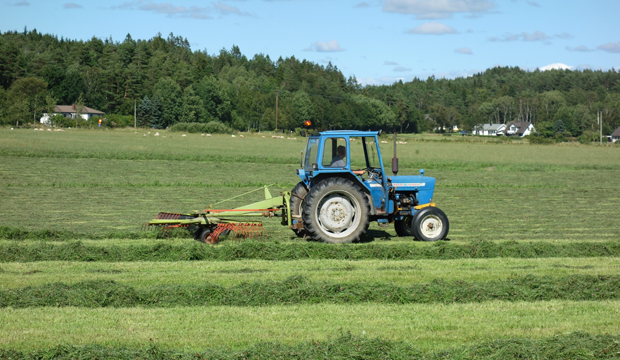Farm Succession is an increasing concern. We know that 98% of U.S. farms are family farms and they are responsible for 85% of total farm production. We also know that the average age of farmers has been increasing steadily and is now just over 58. Pressure to retire is certainly less since much of the hard physical work has gone from farming and today’s 70-75 years old are in much better shape than farmers 60-65 years old not so long ago.
A 2016 paper (Agecon.umn.edu, J.M.Harris and A.Mishra)– “ARMS (2013) survey data found that nearly 30% of U.S. farms do have succession plans. Over 80% of those with a succession plan indicate that they have designated a family member as successor. 40% of designated successors are currently working on the farms and will eventually lead, manage, and/or operate these farms. 21% of ARMS farms (2013) indicate they intend to retire in 5 years. 38% of farms indicating retirement in 5 years, plan to turn over management and operation of their farm business but retain some ownership. Only 19% percent will sell and 15% will rent.
Another survey found that 36% of farms transferring land ownership and retiring in five years have succession plans. 42% of these ownership transfers will occur as market sales. However, 30% of transferred acreage is planned to be sold to relatives and 58% is planned to be transferred by some form of legal transfer. It is not clear from the data that the latter transfers are solely to the next generation.”
There is no doubt that the process of farm succession is daunting, complex and challenging particularly with the much higher land values, resulting in estates reaching millions of dollars. However, probably best to tackle sooner than later. Plenty of help is available from a wide range of companies, accountants, lawyers etc., but an integrated approach is highly recommended so that the whole process – legal, business and tax, etc. – is completely compatible. Critical considerations include taking it slowly (may take five years), maintaining good communication and relationships with all concerned, particularly the family member(s) taking over the farm, and taking advantage of professional help.
There are 3.2 million farmers in the U.S. operating 2.1 million farms according to the 2012 Ag census. Small family farms (less than $350,000) account for 90% of all U.S. farms. We know that the 2014 USDA Agricultural Land Survey found that there are 2 million farmers who manage or rent out farmland.
No surprise is the fact that rented land is playing an increasingly important role in US Agriculture today. 354 million acres or 39% of all U.S. farmland is rented or leased and it is valued at $1.1 trillion. 80% of all rented farmland is owned by non-farming landlords. The average age of principal landlords was 65 years or older in 2014, while only 18% were under 55.
The survey concluded that 91.5 million acres of farmland are likely to change ownership in the next five years. However “landlords expect to keep or put nearly 48% of these acres into trusts so that only 21 million acres are expected to be sold to a non-relative, while 26 million acres are expected to be sold to a relative or given as a gift. This means that only a small percentage of farmland will be available for new entrants into the farming sector over the next five years, and with increasing farm real estate values nationwide, finding affordable land to start or expand a farm will continue to be a challenge.”
The Northeast is expecting to transfer the fewest acres to new farmers over the next five years, with less than 1 million in total across the 10 states in the region. While not surprising, given the relatively few acres of farmland compared to other parts of the country, it will be an even greater challenge for new farmers looking to start farming in the region and who wish to take advantage of access to East Coast local and regional food markets.” National Sustainable Agriculture Coalition’s blog, September 18, 2015.
Greenhouse gas emissions (GHG) – Agriculture plays a relatively small role in contributing to GHG emissions. EPA in 2015 found that Electricity provided 29% of total GHG emissions, followed by Transportation 27%, Industry 21%, Commercial and Residential 12%. Agriculture was only 9% providing much of the methane and nitrous oxide emissions. There has been criticism of our livestock industry for being responsible for the major contribution to methane production as a result of enteric fermentation, the normal digestive process in cattle, sheep, buffalo and goats and promoted as another reason not to eat beef and cattle products.
EPA explains “Greenhouse gas emissions from agriculture have increased by approximately 8 percent since 1990. One driver for this increase has been the 64 percent growth in combined CH4 and N2O emissions from livestock manure management systems, reflecting the increased use of emission-intensive liquid systems over this time period.” Opportunities for reducing emissions are “Adjusting the methods for managing land and growing crops – more precise N fertilizer levels, Adjusting feeding practices and other management methods –and Controlling the way in which manure decomposes to reduce N2O and CH4 emissions.” All are practical options.

